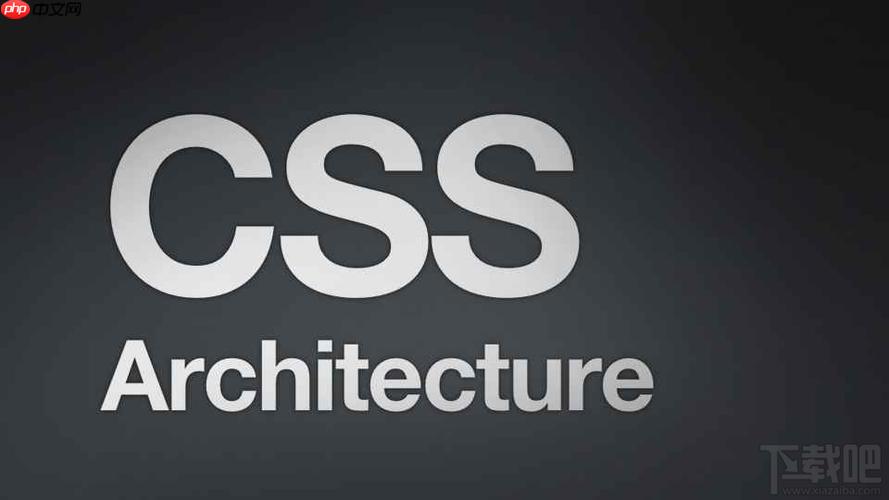折叠面板动画性能优化方法包括使用transform: scaley代替max-height以利用gpu加速,以及合理使用will-change属性提示浏览器优化渲染;2. 处理内容高度不确定时,可通过JavaScript动态计算scrollheight并设置max-height,确保精准高度避免过度渲染;3. 纯css方案可采用details和summary标签或隐藏的checkbox配合label与相邻兄弟选择器实现,优点是无需javascript,但交互灵活性较低;应根据项目需求选择合适方案。

使用css制作折叠面板动画,核心在于利用
max-height
的过渡效果。控制
max-height
来实现展开和折叠,配合
overflow: hidden
隐藏超出部分,就能创造出平滑的动画效果。
解决方案:
首先,我们需要html结构。一个容器包含标题和内容区域。标题用于触发折叠/展开动作,内容区域则是实际要显示/隐藏的部分。
立即学习“前端免费学习笔记(深入)”;
<div class="accordion"> <div class="accordion-header">标题</div> <div class="accordion-content"> 这里是折叠面板的内容。可以包含任何html元素。 </div> </div>
接下来是CSS样式。关键在于设置
accordion-content
的
max-height
和
overflow: hidden
。
.accordion-content { max-height: 0; /* 初始状态隐藏 */ overflow: hidden; transition: max-height 0.3s ease-out; /* 过渡效果 */ } .accordion.active .accordion-content { max-height: 500px; /* 展开状态,设置一个足够大的值 */ }
JavaScript (或者使用纯CSS
:checked
状态,如果允许使用
<input type="checkbox">
作为触发器) 用来切换
.active
类。
const accordionHeader = document.querySelector('.accordion-header'); const accordion = document.querySelector('.accordion'); accordionHeader.addEventListener('click', () => { accordion.classList.toggle('active'); });
这里的
max-height: 500px;
是个关键点。你可能需要根据你的实际内容调整这个值,确保它足够大,能够容纳所有内容。如果内容高度不确定,可以考虑使用JavaScript动态计算,或者使用
height: auto
配合
transition: height
,但后者在某些情况下可能表现不佳。
折叠面板动画的性能优化有哪些方法?
max-height
过渡虽然简单,但在复杂场景下可能会有性能问题,尤其是内容高度未知时设置过大的
max-height
。一种优化方法是使用
transform: scaleY(0)
和
transform: scaleY(1)
来代替
max-height
。 这种方法通常性能更好,因为
transform
的动画通常由GPU加速。
.accordion-content { transform-origin: top; transform: scaleY(0); transition: transform 0.3s ease-out; } .accordion.active .accordion-content { transform: scaleY(1); }
另一种优化策略是使用
will-change
属性。它可以提前告知浏览器哪些属性将会被动画化,从而优化渲染性能。
.accordion-content { will-change: max-height; /* 或者 will-change: transform; */ }
但是,过度使用
will-change
可能会适得其反,因为它会占用浏览器更多的资源。因此,只在需要优化的元素上使用它。
如何处理折叠面板内容高度不确定的情况?
如果内容高度不确定,并且不想使用
max-height
设置一个很大的值,可以考虑使用JavaScript动态计算内容高度,然后在展开时设置
max-height
为计算出的高度。
accordionHeader.addEventListener('click', () => { accordion.classList.toggle('active'); const contentHeight = accordion.querySelector('.accordion-content').scrollHeight; if (accordion.classList.contains('active')) { accordion.querySelector('.accordion-content').style.maxHeight = contentHeight + 'px'; } else { accordion.querySelector('.accordion-content').style.maxHeight = 0; } });
这种方法可以确保
max-height
的值始终与内容高度匹配,避免了过度渲染的问题。但需要注意的是,频繁的JavaScript计算可能会带来额外的性能开销,需要在实际场景中权衡。
纯CSS实现折叠面板的方案有哪些?
如果不想使用JavaScript,可以使用
<details>
和
<summary>
标签来实现折叠面板。
<details> <summary>标题 这里是折叠面板的内容。
<details>
标签默认就具有折叠/展开的功能,可以通过CSS进行样式定制。
details > summary { list-style: none; /* 移除默认的三角箭头 */ } details > summary::-webkit-details-marker { display: none; /* 兼容性处理,移除Chrome下的三角箭头 */ } details > * { transition: all 0.3s ease-out; /* 给内容添加过渡效果 */ }
另外,还可以使用
<input type="checkbox">
配合CSS的
+
选择器或
~
选择器来实现纯CSS的折叠面板。这种方法需要将checkbox隐藏,并使用label来触发折叠/展开动作。
<input type="checkbox" id="accordion-toggle"> <label for="accordion-toggle">标题</label> <div class="accordion-content"> 这里是折叠面板的内容。 </div>
#accordion-toggle { display: none; } #accordion-toggle + label { cursor: pointer; } .accordion-content { max-height: 0; overflow: hidden; transition: max-height 0.3s ease-out; } #accordion-toggle:checked + label + .accordion-content { max-height: 500px; }
这些纯CSS方案的优点是不需要JavaScript,减少了代码量和维护成本。但缺点是灵活性较低,难以实现复杂的交互效果。选择哪种方案取决于具体的项目需求。


评论(已关闭)
评论已关闭